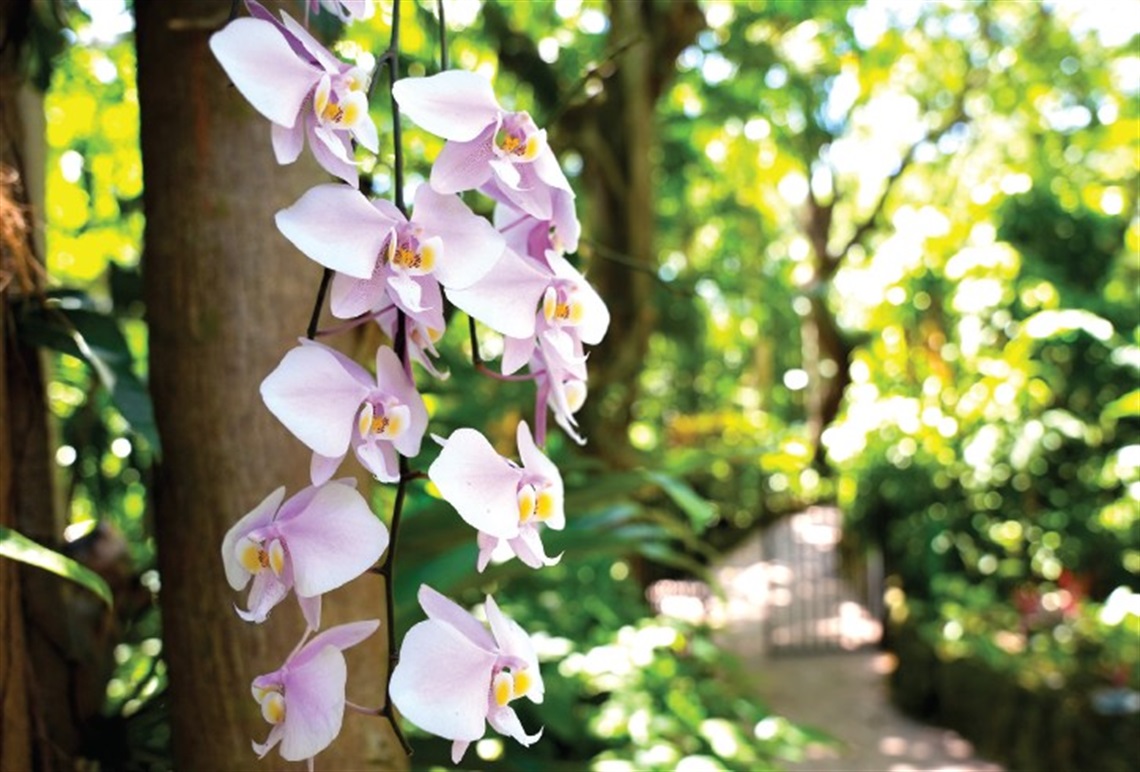Orchids in the Gardens
Published on May 01, 2025

Orchids the desirable, orchids the recognizable, orchids the historical, and yes, orchids the famous. Everyone knows something about orchids, one of the two largest plant families. There are approximately 28,000 species, with new ones still being discovered. Orchids, while often thought of as exclusively tropical, are actually found worldwide in every sort of environment except glaciers and the oceans. Various orchids grow on trees, on rocks, in savannahs and prairies, in shallow water, and in deserts and on mountaintops. One species grows (and flowers) completely underground, and various orchids worldwide have no chlorophyll to help produce their food, relying instead on close associations with soil fungi for sustenance.
Orchids vary greatly in size and survival strategies, befitting their enormous species diversity. The smallest orchid plants are barely an inch in height. Their tiny translucent flowers are only one living cell thick. Individual plants of the largest orchid species occasionally weigh a couple of tons. The blooming plants produce several thousand flowers. Some orchids, including the famous Florida native Ghost Orchid, have no leaves or stems.
Orchids have all sorts of ways to lure pollinators to their often-intricate flowers. Many species produce scents that signal nectar availability. Others produce oily compounds that solitary male bees use as a sort of cologne to make themselves more attractive to females. Some orchids take these ploys to extremes - their blooms look remarkably like female bees or butterflies, designed to lure amorous males. Due to their genetics, it’s easy to hybridize orchids. They’ve been the objects of intentional plant breeding for at least 150 years.
Many orchids are displayed in the trees at Pinecrest Gardens. Areas are chosen that provide the best growing conditions without the need for an unreasonable amount of specialized care. They can be seen in the Caribbean Garden, in the indigenous Live Oaks near Cypress Hall, and especially on two large logs in the Cypress Slough. A specimen of the enormous Grammatophyllum speciosum, the worlds’ largest orchid species, is displayed across from the Gardens’ admissions booth. It’s a “teenaged” plant and hasn’t yet bloomed.